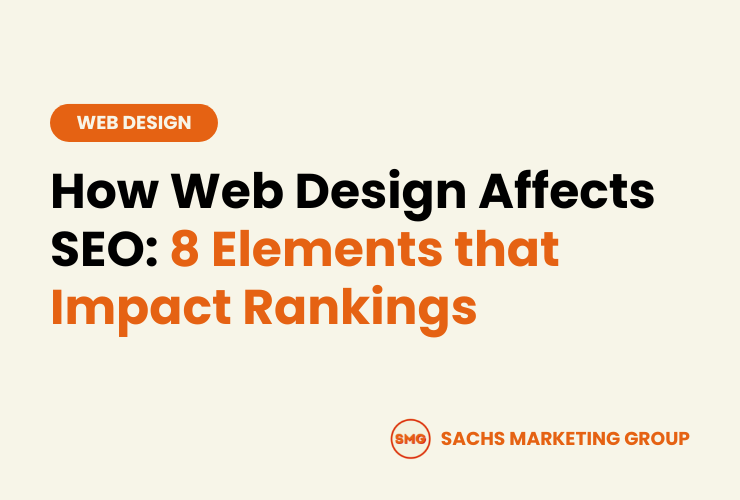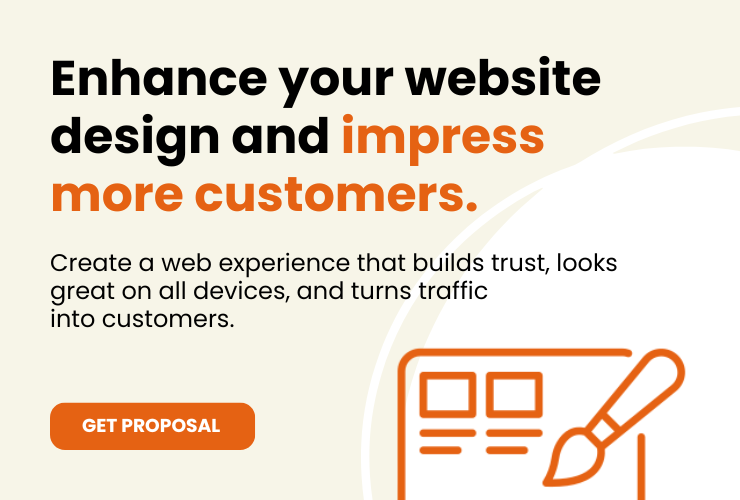Web design significantly influences SEO by affecting how easily users interact with a site. A clean, intuitive layout keeps visitors on the site longer and reduces bounce rates, essential for search engine rankings. Additionally, responsive design ensures the site is accessible on all devices, which is crucial for mobile rankings. Proper HTML structure aids search engines in indexing content efficiently, boosting visibility.
A website is the front door to any business, making its design and discoverability essential. Web design focuses on a site’s aesthetic and functional aspects, ensuring it is appealing and user-friendly. Search engine optimization (SEO) aims to elevate a website’s presence in search engine results, attracting more organic traffic by aligning content with what users are searching for.
Though targeting different facets of a website’s success, SEO and web design are deeply interconnected. A well-designed website enhances user engagement, positively impacting SEO rankings. This intricate relationship suggests that a website’s design can significantly influence its SEO effectiveness.
Understanding how web design affects SEO is key to leveraging both for a successful, high-performing website.
This article explores how web design affects SEO.
How Web Design Affects SEO
The design of your website is not just about aesthetics—it’s a critical component that directly impacts your Search Engine Optimization (SEO) and, by extension, your site’s visibility and traffic.
Effective web design ensures that your site is visually appealing, structured, and optimized so that search engines can easily understand and rank it. A well-designed website offers an intuitive user interface, fast load times, and mobile compatibility, all essential for boosting SEO.
Emphasizing these design elements can enhance user experience, reduce bounce rates, and ultimately achieve higher rankings in search results.
Let’s take a closer look at how web design affects SEO:
1. User Experience
The overall user experience (UX) is pivotal in determining a website’s search engine rankings. Search engines like Google have increasingly emphasized UX elements as critical ranking factors because they aim to provide users with the most helpful and satisfying results.
Key UX metrics that impact SEO include page load time, mobile-friendliness, and ease of navigation, all of which contribute to how engaging and functional a website is perceived by its visitors.
A website that loads quickly displays well on mobile devices, and is easy to navigate tends to retain visitors longer, reducing bounce rates and increasing the likelihood of conversions. Additionally, the incorporation of an accessible design, clear call-to-action buttons, and a logical structure all enhance user satisfaction, which search engines monitor and reward.
By improving these aspects of UX, a website not only meets user expectations but also signals to search engines that it is a credible and valuable resource, thus improving its organic search rankings.
Related: How to Improve User Experience on Your Website
2. User Interface
The user interface (UI) is the point of human-computer interaction and communication in a device or software. An effective UI provides easy, enjoyable interactions between the user and the product.
It is crucial to facilitate a seamless experience by presenting a clean, accessible design that users find intuitive. UI design focuses on anticipating what users might need to do and ensuring that the interface has elements that are easy to access, understand, and use to facilitate those actions.
It combines typography, color schemes, buttons, animations, and imagery to guide users visually through a product’s interface.
Good UI design enhances the usability of your website and can significantly improve its performance by making it simple and enjoyable to navigate.
You might be interested in this: 10 Questions to Ask When Redesigning a Website
3. Responsive Design
Responsive design ensures a website’s layout and content look and function well on different devices, including desktops, tablets, and smartphones.
This design approach uses flexible layouts, images, and cascading style sheet (CSS) media queries to adapt to the viewer’s device. It’s essential because it significantly affects how users experience a website. Without responsive design, a site can appear broken, be hard to navigate, or display content inappropriately for certain devices, which can frustrate users and lead them to leave the site.
Implementing responsive design improves user satisfaction by providing a consistent experience across different screen sizes and orientations, which in turn can lead to increased retention and conversion rates.
4. Website Speed and Performance
Website speed and performance are vital factors in user experience and SEO rankings.
A fast-loading site helps keep users engaged, reduces bounce rates, and increases the likelihood of visitors staying longer and exploring more pages. Performance optimization involves techniques such as compressing images, leveraging browser caching, minimizing the number of HTTP requests, and optimizing code by reducing JavaScript and CSS. These actions help improve the speed at which a page becomes interactive and useful to the user.
Enhanced website performance leads to better user satisfaction, higher conversion rates, and improved search engine rankings, making it a critical element of web design and maintenance.
Related: How to Improve Website Performance
5. Site Architecture
Site architecture refers to how a website’s structure is planned and organized to meet business goals and user needs effectively.
Good site architecture makes a website more navigable and understandable, helping users find information quickly and easily. It also plays a critical role in SEO, as a logical structure helps search engines crawl the site more effectively, understanding the hierarchy and importance of content, which boosts visibility in search results.
Key elements include a clear hierarchy in menu design, consistent navigation patterns, and strategic use of internal links that connect relevant content. Implementing an intuitive site architecture ensures that users and search engines can navigate the site without confusion, improving the overall user experience and SEO performance.
6. Structured Data
Structured data is a standardized format for providing information about a page and classifying the page content. For web designers, ensuring that the design elements of a website can accommodate structured data is crucial.
This means designing web pages so that areas where structured data might be applied—breadcrumbs, events, people, or reviews—are clearly defined and properly set up. Implementing structured data makes it easier for search engines to crawl, understand, and display the content in rich snippets, which can enhance visibility in search results.
From an SEO perspective, structured data allows search engines to index the website better and improve how content is presented in search results, potentially increasing click-through rates.
This can be particularly important for doctors and other professionals in the mental health or rehab & addiction treatment fields because certain types of structured data can help Google understand your credentials, including your educational background and credentials.
7. Visual Content
Visual content, including images, videos, and animations, attracts and retains website visitors. It enhances the user experience by breaking up text, illustrating concepts, and providing a more engaging and interactive user interface.
For web design, it’s essential to ensure that visual content is optimized for performance and aesthetics. This includes using the correct file formats, compressing files to speed up load times, and ensuring visual content is responsive across all devices.
Additionally, visual content should be accessible by providing text alternatives, such as captions or alt text, which helps with SEO and makes the content accessible to users with disabilities. Well-implemented visual content can significantly enhance a website’s appeal, engagement, and SEO.
8. Accessibility
Accessibility in web design ensures that websites are usable by people of all abilities and disabilities. This includes designing interfaces that can be navigated effectively with screen readers, providing sufficient contrast ratios for visual content, and ensuring all interactive elements are operable via keyboard for those who cannot use a mouse.
Accessibility is not just an ethical obligation; it also influences SEO, as search engines favor websites that provide a good user experience to all users, including those with disabilities. Making a website accessible expands its audience, improves brand perception, and can lead to better search engine rankings.
A few key accessibility features:
- Alt Text for Images: Provides descriptions for images, aiding those who use screen readers.
- Keyboard Navigation: Ensures that all functions are accessible via a keyboard, not just a mouse.
- Text-to-Speech Compatibility: Allows text content to be read aloud by screen readers.
- Contrast and Color Choices: This ensures that the text and background are highly contrasted to aid visibility for those with visual impairments.
- Text Resizing: Allows users to adjust text size without breaking the site’s layout.
- Closed Captions and Transcripts: Offers captions for videos and transcripts for audio content to assist hearing-impaired users.
- Accessible Forms: Includes proper label tags and visible focus indicators to make forms easier to use.
- Consistent Navigation: Maintains a predictable structure for ease of use.
- Error Identification and Suggestions: Points out errors in form inputs and provides suggestions for corrections.
- Skip Navigation Links: Provides links at the top of pages that allow users to skip directly to the main content.
Ensuring accessibility should be a fundamental aspect of the design process, integrated from the outset to create a universally usable environment.
Web Design and SEO Work Together to Drive Results
Collaboration between web designers and SEO specialists is essential because it helps align a website’s aesthetic and technical aspects.
When SEO considerations are woven into the design process early on, potential challenges that might arise from retroactively applying SEO to an already established design are prevented.
This can include technical issues like site speed optimization, mobile responsiveness, and correct semantic HTML structure, which are easier to address during the design phase rather than after the site is built.
Check this out: 10 Tips for Choosing a Web Design Company
Benefits of Considering SEO During the Design Process
Enhanced User Experience: SEO isn’t just about keywords and backlinks; it’s also about creating a user-friendly site. Integrating SEO into the design process ensures that the site navigation is intuitive, content is easily accessible, and the overall layout is optimized for engagement—all of which are crucial for keeping visitors on the site longer.
Improved Site Structure: Building SEO into the web design process helps establish a clear, logical site structure. This structure is vital for search engine crawlers to understand and index the site’s content efficiently, improving search results visibility.
Cost and Time Efficiency: Addressing SEO as part of the web design process eliminates the need for significant redesigns or updates to retrofit SEO into an already completed website. This can save substantial time and resources while reducing the risk of breaking the existing user experience or visual appeal.
Avoiding Common SEO Pitfalls: Designers aware of SEO fundamentals can avoid common pitfalls, such as using excessive JavaScript, embedding text in images that can’t be crawled by search engines, or designing content layouts that might dilute keyword effectiveness.
Integrating web design and SEO is beneficial and essential for creating a successful online presence. It streamlines the development process, enhances site functionality and user experience, and maximizes the website’s potential to rank well in search engines.
Fostering a collaborative environment between designers and SEO specialists can ensure that your website is beautifully designed and optimized for search engine success.
This is one of the perks of working with a full-service digital marketing agency, as these agencies have a web design and SEO department that can collaborate closely.
Our Professional Web Design & SEO Services
Are you ready to elevate your website to the next level? Partner with Sachs Marketing Group and tap into our web design and SEO expertise to create a site that looks great and performs excellently in search rankings.
As a full-service digital marketing agency, we offer a wide range of digital marketing services to help drive results that help our clients grow. Our team of experts will collaborate with you to craft a custom strategy that increases your visibility and drives more traffic to your site.
Contact us today and transform your online presence into a powerful asset for your business!
Conclusion
Achieving optimal user experience and search engine visibility results requires a concerted effort between web designers and SEO specialists. This collaboration ensures that the website looks appealing and functions smoothly and is optimized for search engines right from the start.
Web design and SEO are not one-time tasks but ongoing processes that need to adapt to changing user behaviors, technological advancements, and evolving search engine algorithms. Regular updates, continuous optimization, and periodic redesigns are necessary to keep a website relevant and competitive in search rankings.
By working together, designers and SEO experts can create a robust website that attracts and retains user interest over time, driving sustained traffic and engagement.



